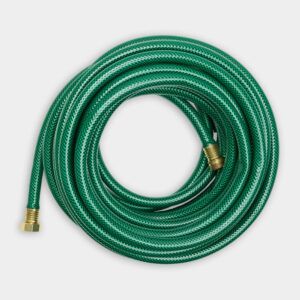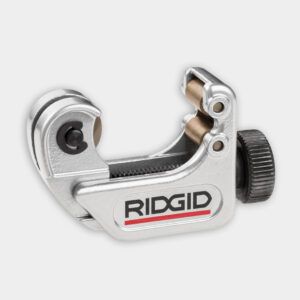Project details
Skill
Cost
Estimated Time
*Costs in this article sourced from Angi.
Installing an electric heat pump water heater can significantly reduce your home’s energy consumption while providing reliable hot water. This appliance combines the efficiency of a heat pump with traditional electric heating elements, offering a smart solution for homeowners looking to upgrade their water heating system.
In this video, Richard Trethewey shows us how to install a Voltex Hybrid Electric Heat Pump water heater, highlighting its energy-saving features and proper setup.
Understanding Heat Pump Water Heaters
Heat pump water heaters use electricity to move heat from the surrounding air into the water tank rather than generating heat directly. This process makes them significantly more efficient than traditional electric water heaters.
How Heat Pump Water Heaters Work
Heat pump water heaters operate on a simple yet ingenious principle. They extract heat from the ambient air and transfer it to the water in the tank. This process is similar to that of a refrigerator but in reverse. The heat pump component sits on top of, or the side of, the water tank and consists of:
- An evaporator coil that absorbs heat from the surrounding air
- A compressor that pressurizes the refrigerant, raising its temperature
- A condenser coil that transfers the heat to the water in the tank
During periods of high demand, the unit can switch to traditional electric heating elements to ensure a consistent hot water supply.
Advantages of Heat Pump Water Heaters
Heat pump water heaters offer several benefits over conventional electric models:
- Cost savings: Lower energy consumption translates to reduced utility bills
- Dehumidification: They can help dehumidify the space where they’re installed, which is particularly beneficial in humid climates
- Energy efficiency: They can use up to 50% less electricity than standard electric water heaters
- Environmental impact: Reduced energy use means a smaller carbon footprint
Considerations for Installation
Before installing a heat pump water heater, consider the following factors:
- Ceiling height: Ensure there’s enough vertical clearance for the unit and any required maintenance
- Location: They work best in areas that remain in the 40- to 90-degree Fahrenheit range year-round
- Noise level: The heat pump component produces some noise, similar to a window air conditioner
- Spatial requirements: These units need adequate air space around them to operate efficiently
Preparing for Electric Heat Pump Water Heater Installation
When installing an electric heat pump water heater, take the following preparatory steps.
Assessing Your Current Setup
Before installing a new heat pump water heater, evaluate your existing water heater and electrical system. Check the age and condition of your current water heater. Ensure your electrical panel can support the new unit’s power requirements.
Gathering Necessary Tools and Materials
To install a heat pump water heater, you’ll need the following tools and materials:
- Adjustable wrench
- Electrical wire and connectors
- Pipe cutter
- Pipe fittings
- Safety glasses and work gloves
- Screwdriver set
- Teflon tape
Additionally, you may need specific materials based on your local plumbing codes and the manufacturer’s instructions.
Safety Precautions
Safety should be your top priority when installing a heat pump water heater. Take these precautions:
- Turn off the power to the existing water heater at the circuit breaker
- Shut off the main water supply to the house
- Wear appropriate personal protective equipment
- Follow all local building codes and manufacturer’s instructions
If you’re unsure about any step, consult a professional plumber or electrician
Step-By-Step Water Heater Installation Process
Installing a heat pump water heater requires careful attention to detail and adherence to safety protocols. Follow these steps for a successful installation:
- Shut the power off to the electric water heater and shut off the main water supply to the house.
- Connect a hose to the bottom of the tank and run the hose to the outside. Drain the old electric water heater.
- Use the pipe cutters to cut the pipes to the water heater and remove it.
- Put the new heat pump water heater into place.
- Connect the new water heater to the main water supply using the appropriate size and type of pipes to match the existing water line.
- Install a vacuum valve near the top of the water heater to prevent it from collapsing when its power supply is off.
- Be sure that the water heater has a temperature and pressure relief valve and that it is correctly installed.
- Some installations may require an expansion valve or expansion tank.
- Turn the water and the electricity back on.
Optimizing Electric Heat Pump Water Heater Performance and Efficiency
To get the most out of your heat pump water heater, consider these tips for optimizing its performance and efficiency.
Ideal Placement
Place the unit in an area with ample air space and a consistent temperature between 40 and 90 degrees Fahrenheit. Garages, basements, or utility rooms often work well. Avoid closets or other confined spaces that could restrict airflow.
Temperature Settings
Set the water temperature between 120 and 140 degrees Fahrenheit. Lower temperatures increase efficiency but may not meet all household needs. Higher temperatures ensure adequate hot water supply but reduce overall efficiency.
Regular Maintenance
Perform these maintenance tasks to keep your heat pump water heater running efficiently:
- Check the condensate drain line for clogs or leaks
- Clean or replace the air filter regularly
- Flush the tank annually to remove sediment buildup
- Inspect the anode rod every few years and replace if necessary
- Remove dust and debris from the evaporator coils annually
Monitoring Energy Usage
Tracking your energy usage is another way to optimize your heat pump water heater’s efficiency. Many modern units come with digital displays or can be connected to smart home systems. This feature allows you to monitor your energy consumption in real time, adjust settings as needed, and track long-term usage trends. It can provide valuable insights into how your household uses hot water and help you make informed adjustments to conserve energy.
Setting Seasonal Modes
Some heat pump water heaters offer different operating modes for various seasons. For example, a hybrid mode might be useful during colder months when the heat pump is less efficient. Using these modes can ensure you always get the most efficient performance from your unit.
Check your unit’s manual for specific guidance on seasonal settings and adjust accordingly.
Troubleshooting Common Water Heater Issues
Even with proper installation and care, you may occasionally encounter issues with your heat pump water heater. Here are some common problems and their solutions:
Insufficient Hot Water
If you’re not getting enough hot water, the issue might be due to:
- High demand: If your household uses an unusually large amount of hot water, the heat pump might be unable to keep up.
- Incorrect temperature settings: Verify that the thermostat is set to your desired temperature.
- Sediment buildup: Over time, sediment can accumulate in the tank, reducing efficiency. Flushing the tank can help resolve this issue.
Noise From the Heat Pump
Noise is a common concern with heat pump water heaters. While some noise is normal, excessive or unusual sounds might indicate a problem:
- Loose components: Check for any loose screws or panels and tighten them as needed.
- Restricted airflow: Make sure there is adequate clearance around the unit for proper ventilation.
- Faulty compressor: If the noise persists, it might be an issue with the compressor. Consult a professional for diagnosis and repair.
Leaking Water
Leaks can occur for various reasons. The most common are:
- Connection issues: Ensure all water connections are secure and corrosion-free.
- Faulty valves: Check the temperature and pressure relief valve, as well as the drain valve, for signs of leakage.
- Tank corrosion: If the tank itself is corroded, it might need to be replaced.
Our Conclusion
Installing an electric heat pump water heater is a smart investment for homeowners looking to reduce energy costs and improve efficiency.
While the installation process requires careful planning and some specific tools, the long-term benefits of lower utility bills and reduced environmental impact make it a worthwhile upgrade for many households.


